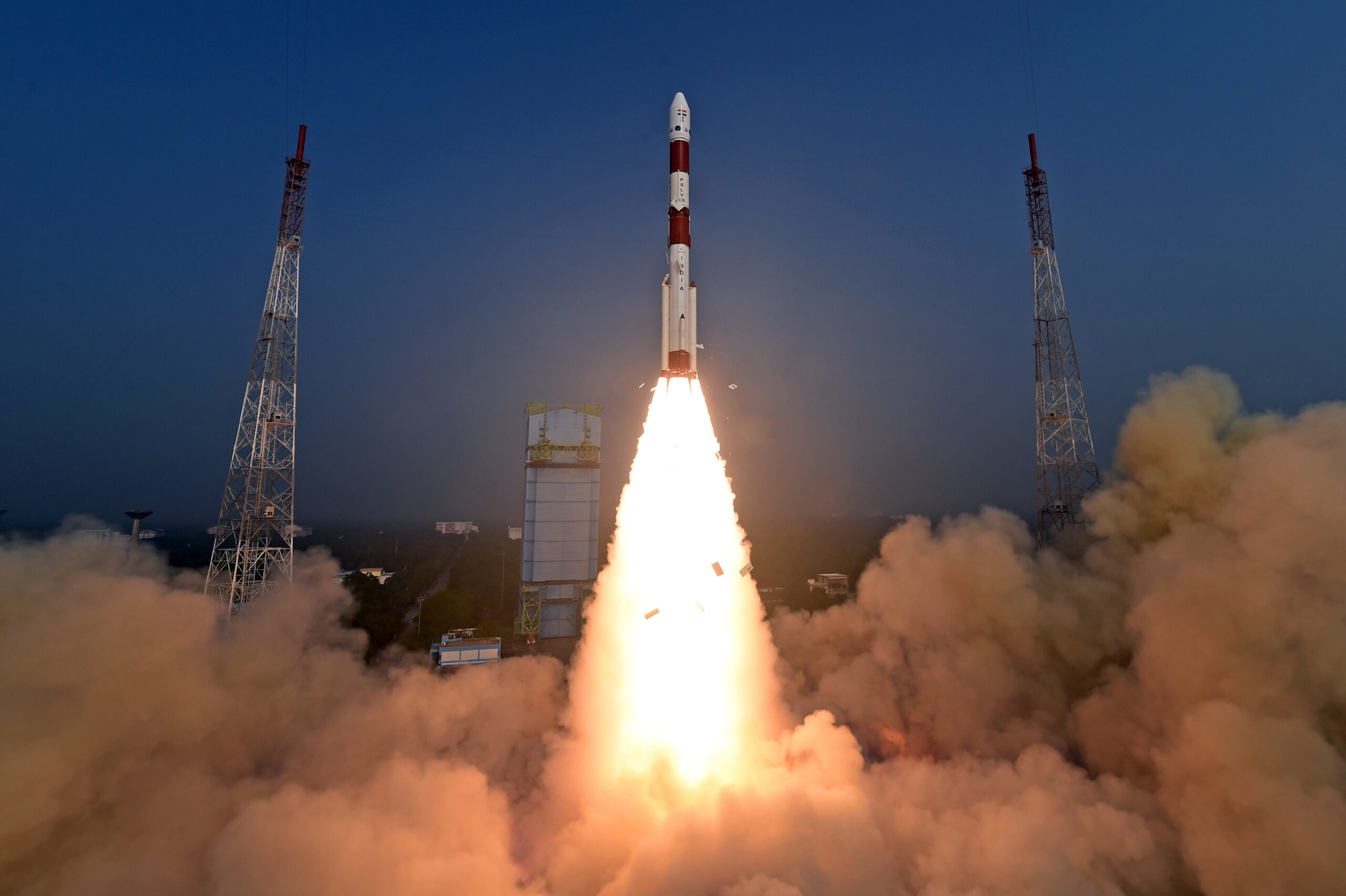In a groundbreaking achievement, the Indian Space Research Organisation (ISRO) has successfully launched its inaugural X-Ray Polarimeter Satellite, XPoSat, using the reliable Polar Satellite Launch Vehicle (PSLV) in its C58 mission. The primary satellite, XPoSat, was deployed into a 650 km Low Earth Orbit, followed by a strategic manoeuvre that lowered its altitude to 350 km for the PSLV Orbital Experimental Module-3 (POEM-3) experiment. This milestone marks ISRO’s entry into scientific research dedicated to X-ray polarization, with XPoSat geared to investigate intense X-ray sources in space, providing unprecedented insights into celestial phenomena such as black holes.
The launch took place from the first launch pad at 9:10 am, and the 44.4-meter-tall PSLV rocket accomplished its primary objective by precisely placing XPoSat into the intended orbit after a 21-minute flight. Subsequently, scientists at ISRO initiated a manoeuvre by firing the fourth stage of the PSLV rocket twice. This manoeuvrer aimed to reduce the satellite’s altitude from 650 km to 350 km, setting the stage for the scientific experiments under the PSLV Orbital Experimental Module-3 (POEM-3) initiative. The successful execution of this complex manoeuvrer highlights ISRO’s technical prowess and strategic capabilities.
The PSLV variant utilized for this mission was the PSLV-DL, boasting a lift-off mass of 260 tonnes. Notably, the fourth stage of the rocket is configured as a 3-axis stabilized orbital platform designed for conducting experiments. This particular mission is part of ISRO’s ongoing efforts to enhance scientific research capabilities and explore new frontiers in space exploration.
This venture is not the first of its kind for ISRO. A similar scientific experiment was conducted using POEM-2 during the PSLV-C55 mission in April 2023, setting the stage for continuous innovation and advancements in the space agency’s pursuits. The experiments conducted as part of POEM-3 involve 10 payloads from various ISRO centers, each contributing to the broader scientific objectives of the mission.
The electrical power requirements for the fourth stage orbital platform are met through a Flexible Solar Panel in conjunction with a 50 Ah Li-ion battery. The platform, known as PS4, encompasses avionic systems responsible for navigation, guidance, control, and telecommands. Additionally, it features orbital platform altitude control systems essential for conducting experiments and testing the payloads effectively.
Among the 10 payloads involved in the POEM-3 experiment, there are several noteworthy contributions. The Radiation Shielding Experiment Module by TakeMe2Space, the Women Engineered Satellite by LBS Institute of Technology for Women, BeliefSat (an amateur radio satellite) built by K J Somaiya Institute of Technology, and the Green Impulse Transmitter by Inspecity Space Labs Pvt Ltd are some of the key components. Additionally, the LEATTD (Launching Expeditions for Aspiring Technologies Technology Demonstrator) by Dhruva Space Pvt Ltd, RUDRA 0.3HPGP, and ARKA 200 developed by Bellatrix Aerospace Pvt Ltd, the Dust Experiment (DEX) built by PRL, ISRO, and the Fuel Cell Power System and Si based High Energy cell built by Vikram Sarabhai Space Centre contribute to the comprehensive payload ensemble.
Furthermore, the successful launch of XPoSat carries significant implications for India’s space endeavours. XPoSat is designed to investigate the polarization of intense X-ray sources in space, a critical diagnostic tool for understanding the radiation mechanism and geometry of celestial objects. The primary payload of XPoSat, POLIX (Polarimeter Instrument in X-Rays), designed to measure polarimetry parameters by the Raman Research Institute, and XSPECT (X-ray Spectroscopy and Timing) built by the U R Rao Satellite Centre, Bengaluru, will play pivotal roles in achieving the mission objectives.
ISRO Chairman S Somanath, addressing the success of the mission, expressed his delight, stating, “Happy new year to all of you. So on 1 January 2024, yet another successful mission of PSLV has been accomplished. PSLV-C58 has placed the primary satellite XPoSat in the desired orbit.” He further announced the successful deployment of the solar panel of the satellite, emphasizing the excellent orbital conditions achieved during the mission.
The mission’s significance extends beyond scientific exploration, encompassing technological demonstrations and initiatives aimed at fostering inclusivity. Mission Director Jayakumar M highlighted the new technologies demonstrated in the POEM-3 experiment, including fuel cells, silicon-based high-energy batteries, and amateur radio satellite services. Notably, one of the payloads is a satellite entirely engineered by women, showcasing empowerment in the field of science and technology. This aligns with broader reforms within the Indian space sector and emphasizes the collaborative efforts of various teams across ISRO’s different centers.
The successful launch of XPoSat marks a stellar beginning for ISRO in 2024 and positions India as only the second country to conduct experiments into the celestial objects through X-ray polarimetry, following NASA’s Imaging X-Ray Polarimetry Explorer mission in December 2021. The mission’s longevity is estimated at about five years, during which XPoSat is expected to deliver substantial benefits to the global astronomy community, contributing valuable insights into the physics of celestial objects such as black holes, neutron stars, and active galactic nuclei.
As ISRO continues to advance its capabilities and expand its scientific endeavours, the XPoSat mission serves as a testament to India’s growing prominence in space exploration and research. The successful deployment of advanced technologies, the inclusion of diverse payloads, and the mission’s scientific objectives collectively underscore ISRO’s commitment to pushing the boundaries of space exploration and contributing to our understanding of the cosmos.


 Opinion2 years ago
Opinion2 years ago
 Entertainment7 years ago
Entertainment7 years ago
 Fashion7 years ago
Fashion7 years ago
 Entertainment7 years ago
Entertainment7 years ago
 Opinion2 years ago
Opinion2 years ago
 Politics7 years ago
Politics7 years ago
 Entertainment7 years ago
Entertainment7 years ago
 Entertainment7 years ago
Entertainment7 years ago









